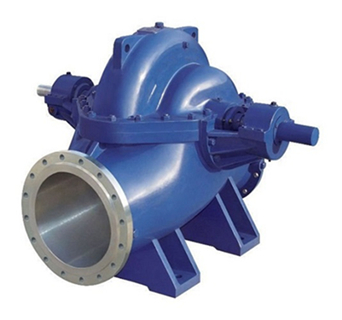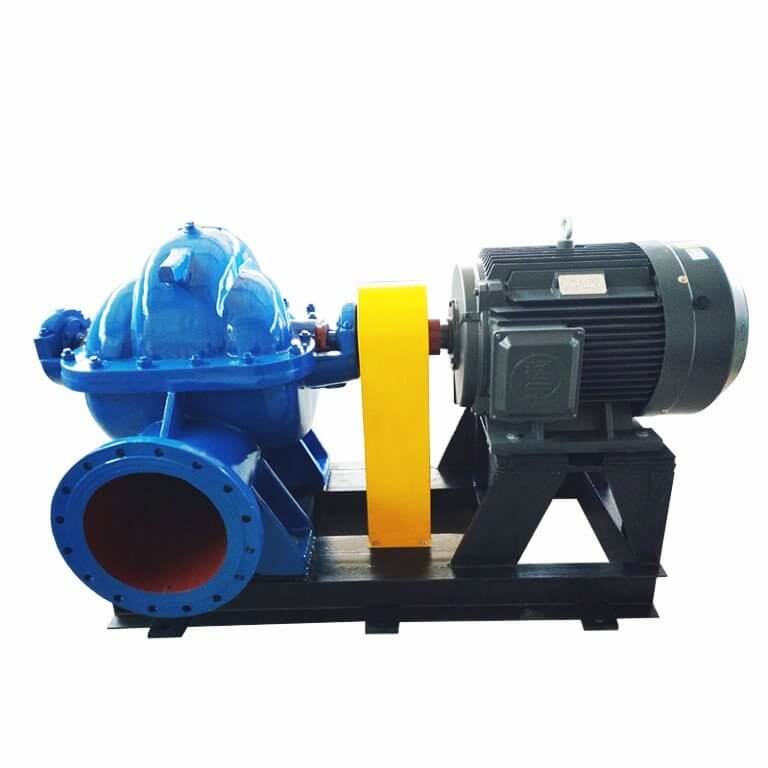Split Case Pump
The split case pumps also called double suction pumps are widely used in projects because of their large capacity. The double suction impeller of this pump is actually composed of two back-to-back impellers, and the water flowing out of the impeller flows into a volute. The split case pump has the following characteristics: it is equivalent to two single suction impellers with the same diameter working at the same time, and the flow can be doubled under the same impeller diameter; the pump case is horizontally opened in the middle, which is convenient for inspection and maintenance. And, the inlet and outlet of the double suction pump are in the same direction and perpendicular to the pump shaft, which is conducive to the arrangement and installation of the pump and the inlet and outlet pipes; the impeller structure of the pump is symmetrical, without axial direction force, smooth operation.
Instructions for the installation of the split case pump are as follow:
Start and stop
Before starting, turn the rotor of the pump; the movement should be smooth and
even.
- Close the gate valve and fill the split case pump (if there is no bottom valve, use a vacuum pump to evacuate water) with water to ensure no air is trapped.
- If the pump is equipped with a vacuum gauge or pressure gauge, close the rotary base connected to the pump and restart the motor. As the speed normalizes, open it again, then gradually open the water gate valve. If the flow is too large, you can close the small gate valve as necessary. Make adjustments as appropriate- if the flow is too small, open the gate valve.
- Tighten the compression nut on the packing gland evenly, so that the liquid leaks out in drops, while paying attention to the rise in temperature at the packing cavity.
- When stopping pump operation, first close the cocks of the vacuum gauge, pressure gauge, and gate valve on the outlet pipe, and then turn off the power to the motor. If the pump is not used for a long time after this point, it should be disassembled, and any water should be wiped dry. Additionally, the processed surface should be coated with a rust-preventing oil for protection during storage.
Operation
- The maximum temperature of the pump bearing should not exceed 75 °C.
- The ideal amount of calcium-based butter used to lubricate the bearing is between 1/3-1/2 of the bearing body space.
- The packing gland can be properly pressed even if the packing is worn. If the fit is too worn, however, it should be replaced.
- Regularly inspect the shaft coupling parts and pay attention to the rise of the temperature of the motor bearings.
- If noise or other abnormal sounds are heard during operation, stop the machine immediately, check the cause, and eliminate it, if possible.
- Do not increase the speed of the pump arbitrarily; it can be used at a reduced speed.



